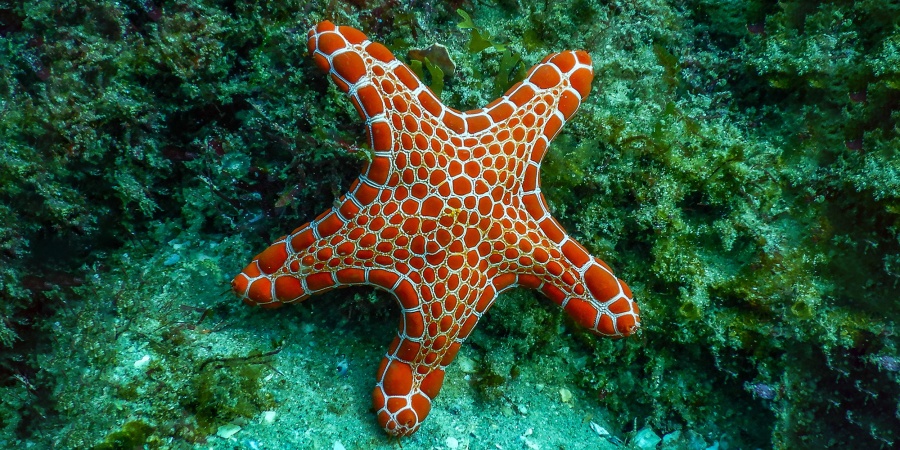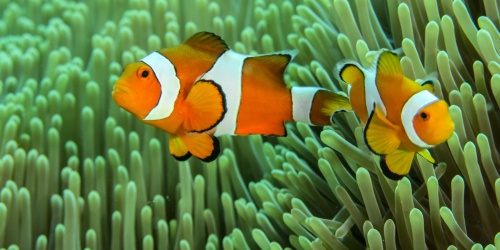
What is a sea star? Sea stars are echinoderms, along with brittle stars, feather stars, sea urchins and sea cucumbers. ‘Echinos’ is a Greek word meaning ‘spiny’ and ‘derm’ means ‘skin’. This is because all echinoderms have plates in their body wall. These plates may either be large or microscopic.
What do they look like? The skeletons of these animals are often seen washed up on the beach, devoid of the wonderful colours they are known for when alive. Live animals are usually red, orange, pink or yellow but grey, green, blue or purple ones can also be seen. These fascinating marine animals consist of a central disc and five or more radiating arms. At the tip of each arm is a small red eye and beneath the body is a central mouth. Turn a live one over and you will see its tube feet, each with a suction disc at the tip, which it uses to move about. Depending on the species, they are between eight and 50 centimetres long.
Where do they live? Sea stars have a wide distribution throughout all of the world’s temperate and tropical seas. Numerous species are found in each of Western Australia’s marine parks. For example, 170 species of sea stars, sand dollars, heart urchins and sea cucumbers are found in the Montebello Islands Marine Park alone.
Where do they live? Sea stars have a wide distribution throughout all of the world’s temperate and tropical seas. Numerous species are found in each of Western Australia’s marine parks. For example, 170 species of sea stars, sand dollars, heart urchins and sea cucumbers are found in the Montebello Islands Marine Park alone.
Conservation status: Sea stars are very common animals capable of breeding up very quickly if conditions are suitable. However, compared to some other types of marine animals, they have not been very well surveyed, and many marine parks, such as the Montebello Islands Marine Park, are home to species that have not yet been described by scientists.
How you can protect sea stars: If you see a sea star while snorkelling, you should be able to pick it up and examine it closely (turn it over and look at its mouth and its tube feet underneath its body) without causing any harm. But please put it back where you found it so it can go about its business. You may not collect sea stars, even those that are dead, from below the high water mark of most marine parks in WA.



























